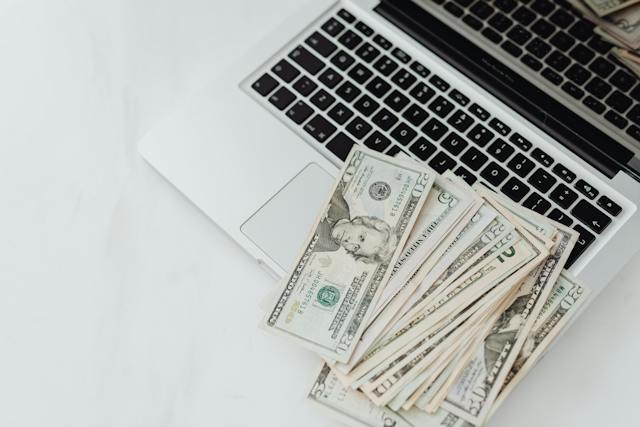.png)
Managing rental properties is about more than collecting rent; it’s about making strategic, data-driven decisions to ensure long-term profitability. Cash flow—the net difference between your income and expenses—is one of the most important financial metrics for property owners.
Achieving positive cash flow means your properties generate more income than costs, ensuring financial stability and sustained growth.
This guide by SGI Property Management Dallas will walk you through how to calculate cash flow, key strategies to maintain it, and tips to optimize your rental property investments.
What Is Cash Flow in Rental Properties?
Cash flow measures the amount of money left after all property-related expenses have been paid. Positive cash flow indicates a profitable property, while negative cash flow suggests expenses outweigh income—a situation that can lead to financial stress.
Mastering cash flow calculation and management is critical for every property owner aiming to build a sustainable rental business.
How to Calculate Cash Flow: Step-by-Step Guide
1. Estimate Gross Income
Gross income represents the total amount of money your rental property generates before any expenses are deducted. It primarily includes rental income, which is the annual rent paid by tenants.
Additionally, additional income can come from extra fees such as pet fees, parking charges, or late payment fees. It's important to account for vacancy losses, which represent potential income lost when the property is unoccupied.

This is typically calculated using a vacancy rate, for example, 6.5%, which helps estimate the income loss during periods when the property is not generating rental income. Together, these components give a clear picture of the total potential earnings from your property.
Example Calculation:
- Gross Rental Income: $12,000 annually
- Additional Income: $1,000
- Vacancy Losses (6.5% of $12,000): $780
- Total Gross Income: $12,220
2. Forecast Operating Expenses
Operating expenses cover all costs associated with managing and maintaining your rental property. These include leasing fees for marketing and tenant acquisition, property management fees for professional services, and maintenance and repair costs to keep the property in good condition.
Capital expenditures (CapEx) are funds reserved for significant upgrades or replacements, while insurance premiums protect against risks, and property taxes are mandatory payments to local governments. Properly managing these expenses is crucial for maintaining profitability.
Example Calculation:
- Leasing Fees: $500
- Property Management Fees: $1,040
- Maintenance Costs: $360
- CapEx Contributions: $600
- Insurance: $1,200
- Property Taxes: $1,500
- Total Operating Expenses: $5,200
3. Calculate Net Operating Income (NOI)
NOI = Total Gross Income - Total Operating Expenses
Example Calculation:
- Gross Income: $12,220
- Operating Expenses: $5,200
- NOI: $7,020
4. Determine Net Cash Flow After Debt Service
If your property is financed, subtract your annual debt service (mortgage payments) from NOI to calculate cash flow.
Example Calculation:
- NOI: $7,020
- Annual Debt Service: $4,296 ($358 monthly mortgage payment)
- Net Cash Flow: $2,724 annually or approximately $227 per month
.jpg)
Strategies to Maintain and Improve Cash Flow
1. Set Competitive Rent Levels
- Ensure rent covers all expenses, including mortgage payments, taxes, and maintenance.
- Follow the 1% rule: Annual rent should exceed all expenses plus 1% of the property’s value for maintenance.
2. Structure Leases Effectively
- Define responsibilities for repairs and maintenance in your lease agreements.
- Incorporate additional income streams like pet or storage fees.
3. Reduce Vacancy Periods
- Market your property promptly when a vacancy is anticipated.
- Use professional photography and competitive pricing to attract tenants quickly.
4. Perform Regular Maintenance
- Conduct routine inspections to address small issues before they escalate.
- Proactive maintenance saves money and keeps tenants satisfied.
5. Manage Expenses Wisely
- Regularly review and negotiate costs like insurance premiums and property management fees.
- Evaluate utility bills for potential savings.
6. Optimize Financing
- Seek loans with favorable terms to lower interest costs.
- Refinance existing loans if better rates become available.
Understanding Average Cash Flow
The average cash flow on a rental property varies based on factors such as location, property type, and market conditions. For instance, in Mesa, Arizona, the annual cash flow for rental owners is approximately $2,880, while in Detroit, Michigan, it is about $5,616.

These figures highlight the importance of conducting thorough market research to set realistic cash flow expectations.
Conclusion: Building Sustainable Profitability
Positive cash flow is the cornerstone of a successful rental property business. By accurately calculating your cash flow, implementing smart strategies, and staying informed about market trends, you can ensure your rental properties remain profitable investments for years to come.
Ready to take your rental properties to the next level and maximize their profitability? At SGI Property Management Dallas, we specialize in optimizing cash flow and ensuring your properties generate consistent returns.
Our expert team handles everything from marketing and tenant acquisition to regular maintenance and financial reporting, allowing you to focus on growing your portfolio.
Whether you're new to rental property management or looking to improve your current strategy, we are here to guide you every step of the way. Contact us today and let SGI Property Management Dallas help you achieve your financial goals with ease and efficiency!









